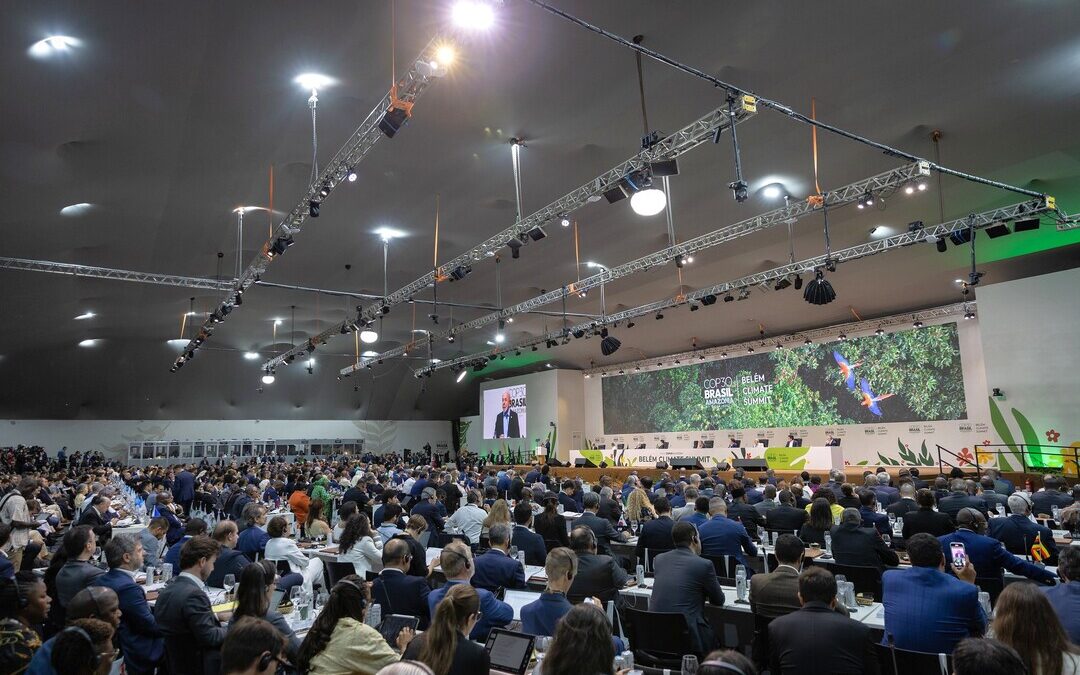Global Emissions Rise 15.6% Since 2005 Despite Climate Pledges, UNFCCC Warns
Global emissions surge despite climate pledges, with nations urged to accelerate efforts to combat climate change impacts worldwide.
Global greenhouse gas emissions have climbed 15.6 percent since 2005 despite countries’ climate commitment to tackle climate change, according to a new United Nations report that calls for faster, deeper action to keep the Paris Agreement’s goals within reach.
The “Biennial Transparency Reports and National Inventory Reports: Synthesis Report by the Secretariat” shows that while over 100 countries have taken steps to implement their nationally determined contributions, greenhouse gas output continues to rise, driven by economic growth, industrial activity, and transportation.
The 81 countries that submitted comprehensive emissions data accounted for about 69 percent of global emissions in 2021, the report said. Emissions reached 36.61 gigatons of carbon dioxide equivalent that year, up from 31.68 gigatons in 2005.
“The first wave of biennial transparency reports offers an initial picture of countries’ progress under the Paris Agreement and areas where greater effort is urgently needed,” the UNFCCC Secretariat said.
A Mixed Picture of Progress
The UNFCCC noted that 50 countries, representing well over half of global emissions, have made “initial progress” toward achieving their 2030 targets. Yet several must “accelerate their actions or make additional efforts” to stay on track.
Energy remains the largest source of emissions and the primary target of national policies. Many countries are phasing out coal-fired power plants, expanding renewable energy capacity and promoting electric vehicles.
About 5,000 climate policies and measures were reported across all sectors, with one-quarter newly adopted or planned since 2021.
Despite such efforts, total emissions rose 4 percent between 2020 and 2021 as economies rebounded from the COVID-19 pandemic.
The energy sector alone saw a 4.6 percent increase during that period, while emissions from industry grew 5 percent.
Adaptation Gains but Uneven Reporting
The report highlights growing attention to climate change adaptation. About 90 percent of countries included adaptation information in their reports, marking a shift toward resilience-building alongside mitigation. Water resource management, food security and nature-based solutions ranked among top priorities.
Many nations have begun integrating loss and damage data into climate change reporting. However, inconsistent methods and limited guidance have prevented standardized assessment. “These early efforts lay the foundation for enhanced future reporting,” the secretariat said.
Finance and Support Gaps
The synthesis shows that climate finance flows reached an annual average of $63.17 billion in 2021–2022, primarily from developed nations. Yet developing countries reported total climate finance needs exceeding $3.39 trillion, highlighting the gulf between resources provided and those required.
Roughly 99 percent of support came from developed countries, with the World Bank, Global Environment Facility, Green Climate Fund and Adaptation Fund among the largest channels.
Developing nations received $60.84 billion, only a fraction of what they identified as necessary.
“While more climate finance was provided in recent years, developing countries continue to face major challenges in accessing funds and building reporting capacity,” the UNFCCC Secretariat said.
Capacity and Data Challenges
The report emphasized persistent data and technical capacity gaps, especially in developing countries. Of 66 developing nations that submitted reports, 47 invoked flexibility provisions due to limited data or expertise.
Incomplete inventories and inconsistent projections continue to constrain the ability to assess collective progress. Only 30 countries submitted emissions projections to 2030, representing less than one-third of global emissions.
Despite shortcomings, the report identifies several scalable solutions. Rapid expansion of renewable energy and electric vehicles stands out as a “remarkable” trend.
Some nations have already achieved electric vehicle sales shares above 90 percent, while solar and wind now meet most new electricity demand growth.
Energy efficiency policies, such as appliance labeling, building retrofits, and heat pump promotion, were cited as cost-effective tools that deliver quick emissions reductions.
The report also underlined the value of inclusive policymaking, integrating gender, youth and Indigenous perspectives to ensure fair transitions.
Legal and Institutional Advances
Many countries have enacted new climate change laws, regulations, and institutional frameworks since 2020. The UNFCCC said such laws are becoming “essential tools” for systemic change, aligning finance and governance with climate objectives.
Some governments, it added, are linking climate policy with socioeconomic benefits such as job creation, public health improvement, and rural development. About 43 percent of countries reported co-benefits from climate actions.
The secretariat concluded that transparency and evidence-based policymaking remain central to building trust and scaling up ambition under the Paris Agreement. Yet it warned that current progress is insufficient to meet 2030 targets.
“The first synthesis of biennial transparency reports signals both momentum and urgency,” the UNFCCC Secretariat said. “Countries must move from incremental progress to transformative implementation if global goals are to remain within reach.”
The report will inform negotiations at the 2025 UN Climate Change Conference in Belém, where Parties to the Paris Agreement will review progress and chart the next phase of global climate change action.
Also Read:
COP30 Opens in Brazil With UN Plea for Urgent Climate Change Action
Nirmal Menon
Related posts

Subscribe
Error: Contact form not found.


